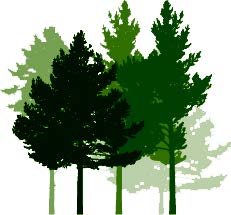Search technical reports
Durable eucalypts
- Machinability of 28-year-old Eucalyptus globoidea wood
SWP-T155
January 2023
This report relates to SWP work plan 131 ‘Wood products from NZDFI species’, milestone 5 ‘Machinability of Eucalyptus globoidea; outdoor demonstration product’. The overall objective was to assess the technical feasibility of…
- Assessment of Eucalyptus globoidea heartwood at Avery
SWP-T157
January 2023
The second (Avery) of three E. globoidea breeding trials has been phenotyped for heartwood properties. The results are comparable to the assessment of the previous E. globoidea trial at Atkinson. The data has been…
- Eucalyptus resistance to paropsine beetles
SWP-T140
June 2022
A wide range of insect herbivores infest Eucalyptus trees in New Zealand, particularly insects native to Australia. The most damaging defoliators are the paropsine beetles. Paropsis charybdis and Paropsisterna cloelia (EVB). In 2019, EVB was present…
- Assessment of Eucalyptus globoidea heartwood at Ngaumu
SWP-T142
December 2021
The third (JNL Ngaumu) of three E. globoidea breeding trials has been phenotyped for heartwood properties (Milestone M10 Workplan SWP-WP130). The results were comparable to the assessment of the previous E. globoidea trials at…
- Assessment of Eucalyptus globoidea heartwood at Avery
SWP-T131-
August 2021
The second (Avery) of three E. globoidea breeding trials has been phenotyped for heartwood properties. The results are comparable to the assessment of the previous E. globoidea trial at Atkinson. The data has been…
- Eucalyptus resistance to paropsine beetles
SWP-T118
December 2020
A wide range of insects can infest Eucalyptus trees in New Zealand, particularly pest insects that are native to Australia. Australian paropsine beetles are significant pests in New Zealand where climatic conditions…
- The decay resistance of six Eucalyptus species after four years exposure
SWP-T111
November 2020
Durability stakes and stakelets were prepared from six different durable Eucalyptus species, (Eucalyptus bosistoana, Eucalyptus quadrangulata, Eucalyptus pilularis, Eucalyptus sphaerocarpa, Eucalyptus globoidea, Eucalyptus muelleriana). For each species, timber had been…
- Assessment of E. globoidea wood properties at Atkinson
SWP-T092
February 2020
While growth characteristics of E. globoidea compare favourably to other eucalypt species in the NZDFI programme, its wood properties in particular natural durability (class 2), ease of drying and to some degree…
- Bonding of E. bosistoana and E. quadrangulata veneer
SWP-T091
November 2019
Aim of this work: To determine if two standard Hexion commercial phenolic resins will bond the E. bosistoana or E. quadrangulata veneer. Previous Hexion work has shown poor bonds with…
- Non-destructive detection of the heartwood-sapwood barrier
SWP-T088
September 2019
This study examined the feasibility of using synthetic aperture radar (SAR) imaging to identify the heartwood-sapwood barrier in trees (Eucalyptus globoidea, Eucalyptus bosistoana and Cupressus ovensii). The dielectric properties measured of…
- The decay resistance of six Eucalyptus species after three years exposure
SWP-T085
August 2019
Durability stakes and stakelets were prepared from six different durable Eucalyptus species, (Eucalyptus bosistoana, Eucalyptus quadrangulata, Eucalyptus pilularis, Eucalyptus sphaerocarpa, Eucalyptus globoidea, Eucalyptus muelleriana). For each species, timber had been selected…
- Heartwood in Eucalyptus bosistoana (2009 plantings)
SWP-T072
March 2019
The ultimate goal of the NZDFI breeding programme is to exploit variation in quantity and quality of extractive content to identify superior families in terms of heartwood content and quality.…
- Optimising new PSP locations for durable eucalypts
SWP-T065
September 2018
As part of an effort to develop a forest industry based on durable hardwood eucalypts in New Zealand, a network of sample plots for numerous species has been established throughout…
- Bioactivity of Heartwood Compounds
SWP-T060
July 2018
This report is based on work according to SWP Work Plan No. SWP-WP026. The results are part of Gayatri Mishra’s PhD thesis, of which the relevant chapters are attached in…
- LVL Stiffness Calculator User Guide
SWP-T059
June 2018
This software is only intended to be used as a decision tool that enables questions to be asked about the potential suitability of a wood resource being able to supply a range of LVL grades.…
- Sapwood Depth Tool – Proof of Principle
SWP-T054
June 2018
This research aims to develop a sapwood tool that can determine the sapwood/heartwood interface based on electrical resistance measurements with minimised set-up time. This report shows the first developed lab-based…
- NZDFI Biosecurity Risk Management Plan
SWP-T051
June 2018
A number of new biological threats to eucalypts have recently become established in New Zealand. NZDFI are particularly concerned about the risk of spreading myrtle rust and EVB (Eucalyptus variegated…
- Heartwood in Eucalyptus bosistoana (2010 plantings)
SWP-T046
May 2018
The measurement of natural durability is resource intensive (Harju and Venäläinen, 2006; Li and Altaner, 2016b). High resource demands prevent this trait from being included in breeding programmes. However, the…
- LVL Trial: Pre-Harvest Stand Assessment
SWP-T042
February 2018
Two trials located in Marlborough have been assessed as a potential source of peeler logs to carry out a peeler study. The trials are: E. bosistoana trial planted in 2003…
- Pest management for durable eucalypts
SWP-T029
June 2017
One of the more unexpected and important results from the phenology study summarised here, was that only one generation of P. charybdis was observed in each of the two years monitored. This…
- Heartwood in Eucalyptus bosistoana (2010 plantings)
SWP-T028
June 2017
The objective of this work is to screen the 2010 E. bosistoana breeding population for heartwood quantity (diameter) and quality (extractive content) CONCLUSION Variation in heartwood diameter between the families was observed,…
- Measuring Strain in Wet Eucalyptus Wood by NIR
SWP-T026
June 2017
These experiments investigated whether band shifts in the NIR caused by strain can be observed in fully water saturated eucalyptus wood samples. Air-dry samples with minor changes in moisture content…
- Improving Heartwood of Durable Eucalypts - Manuscript
SWP-T024
June 2017
The New Zealand Drylands Forests Initiative (NZDFI) aims to establish a new hardwood forest industry based on naturally durable eucalypts. As key a product NZDFI has identified sustainably-grown naturally durable…
- Early Heartwood Screening by Wounding
SWP-T024
June 2017
Trees can be screened at age (1-2 years) for wood properties such as growth stress, collapse, density or stiffness (Chauhan and Entwistle, 2010; Chauhan et al., 2013). Early selection reduces…
- Review of eucalypt wood processing issues
SWP-T016
August 2016
The vast majority of eucalypt plantations worldwide (at least 20 million ha) have been established as fast-growing exotic biomass forests for pulpwood and energy in tropical and sub-tropical environments and…
- Heartwood formation in young Eucalyptus bosistoana
SWP-T012
August 2016
Little is known about heartwood formation in young trees and published literature reports are based on heartwood of old trees. However, in the context of fast-growing short-rotation durable eucalyptus plantations,…
- Screening Eucalyptus bosistoana for Heartwood
SWP-T009
August 2016
Some eucalypts produce timber of highest natural durability and rich colour. Only the heartwood of trees can have these properties. However, the amount and quality of heartwood in trees is…
- Literature Review: Measuring Growth-strain by IR-spectroscopy
SWP-T002
July 2016
Growth-stresses cause problems in wood processing. Current measurement methods of growth stresses are labour-intensive and destructive. Research has shown that changes in stress levels, moisture content and temperature induce molecular deformations in wood,…

 Headlines
Headlines
Article archive »
- Import substitution - Report
January, 2024
In order to supplement New Zealand’s native timber supply, exotic species were introduced throughout the late 19th and 20th centuries, to support both domestic structural and specialty purpose applications. Despite attempts to supply…
- Mac Black Whanganui field day, April 2023
April, 2023
The weather might not have been ideal, but the enthusiasm was palpable as more than 50 people gathered at Richard Thompson and Laurel Stowell’s Papaiti forest, Whanganui. Particularly impressive was…
- Natural durability, accelerated framing tests and relative durability
August, 2021
The New Zealand Building Code offers three pathways for proving durability performance of materials under section B2/VM1 Durability Evaluation. These are History of Use, Similar Materials Tests and Laboratory Tests. Laboratory Tests can…
- Proposed Legislation to implement a National Wood Legality Assurance System
August, 2020
In July 2020 the Ministry for Primary Industries released a proposal to implement a National Wood Legality Assurance system. Farm Forestry Timbers welcome this proposal and fully support strengthening of New…
- Building System Legislative Reform Programme, public consultation
April, 2019
The Ministry of Business Innovation & Employment (MBIE) administer the building code and are proposing major changes to NZ's building laws to: increase the quality of information about building products;…
- Member profile - MacDirect
May, 2018
For the last 25 years I have been developing the local market for Lusitanica and Macrocarpa timber. Our sawmill sources trees from predominantly plantations. Coming from Dairying then owning a…
- Determinations, specialty timbers and the building code
July, 2017
What do you know about "Determinations"? Well... Determinations are best described as judgements made by MBIE where disputes arise between the Building Consent Authority (BCA) and those undertaking building work. BCA's must…
- Harvesting & Milling Indigenous Timber on Private Land
June, 2017
Owners of land with indigenous forests have several options if they wish to harvest and mill indigenous timber. The milling of native timber is regulated by the Forests Act which…
- Optimised Engineered Lumber (OEL), timber framing for the future?
February, 2017
The Specialty Wood Products Partnership is a seven year partnership between central government and the forest industry. It aims to investigate the development of new wood products from locally grown…
- Report on Farm-totara sapwood and resistance to common household borer
January, 2017
Examples of Totara Sapwood Resisting Attack by the Common Household Wood Borer (Anobium punctatum) A Report Prepared by Paul Quinlan for Tane’s Tree Trust, January 2017 Download the report here >>
- Tawa timber An updated perspective on opportunities and issues
November, 2016
Rob Allen and Brenda Tahi From Indigena, November 2016 In his 1994 book titled New Zealand Timbers Norm Clifton concluded that the ‘writing is on the wall’ for tawa timber.…
- Totara and the Building code
June, 2016
Potential markets for farm-totara timber would be significantly improved by complying with New Zealand’s performance-based Building Code. A range of products and applications hold the promise of market demand but…
- Sustainable management or tropical rainforest destruction?
August, 2015
A New Zealand delegation made up of members of the NZ Imported Tropical Timber Group, representing buyers of tropical rainforest timber, recently visited the Solomon Islands to check out supplies…
- Timber Imports mean export of environmental impacts
May, 2015
Wednesday, May 13, 2015 Roger May This article highlights trends in timber and timber product imports. It also addresses the implications for farmers and foresters growing special-purpose timber species and…
- Structural properties of specialty timbers and the Building Code
March, 2015
Farm Forestry Timbers media release, March 2015. Farm Forestry Timbers Society and NZFFA with support from AGMARDT have tested the characteristic stresses of five specialty timber species to meet the…
- Fire Ratings and timber
November, 2014
Amendments to the fire protection provisions of the New Zealand Building Code has received publicity around the effects these changes will have in reducing opportunities to use timber in buildings.…
- Prosperity from Forestry and Wood Products
November, 2013
Wood council of NZ Inc. Media Release, November 2013. The forest and wood products industry has the ability to deliver renewable and resilient growth. There are a number of areas…
- Vital investment tool developed for wood processors
June, 2013
WOOD COUNCIL OF NEW ZEALAND Media release: WoodScape Study, 4 June 2013. A major study report released by the Wood Council highlights the need for by-products from established industries like…
- Australian Government Illegal Logging Prohibition Act
November, 2012
Illegal logging has significant environmental, economic and social costs. Legislation designed to promote the trade in legally logged timber and timber products is now law in Australia. If you are…
- INAUGURAL MEETING OF THE FARM FORESTRY TIMBERS SOCIETY
November, 2012
Farm Forestry Timbers held their inaugural meeting on 17th November 2012. It was agreed to constitute the Society by resolution. The Rules of the Farm Forestry Timbers Society can be…

 Specialty Timbers New Zealand
Specialty Timbers New Zealand